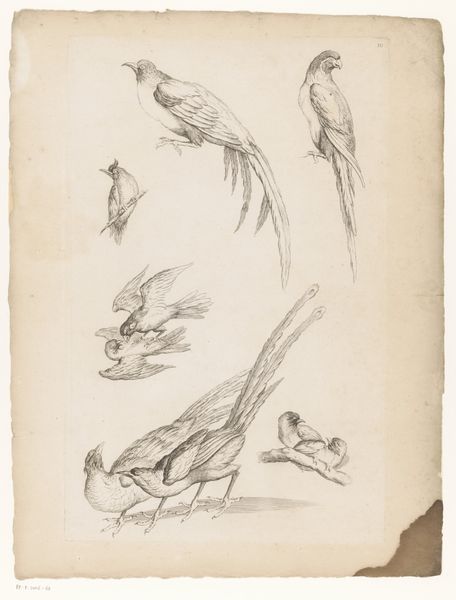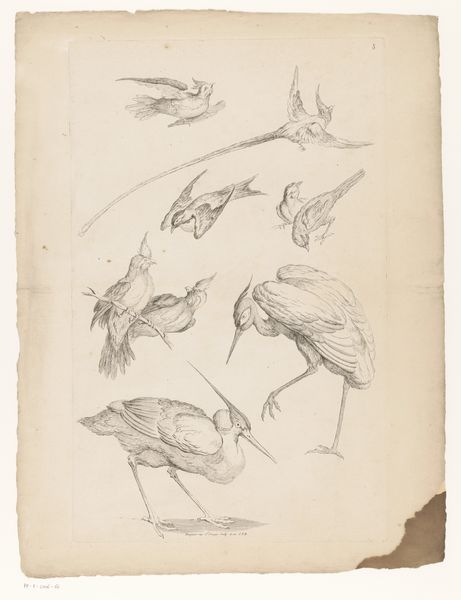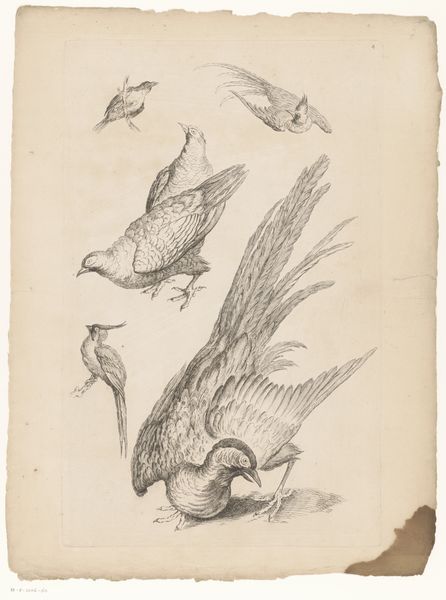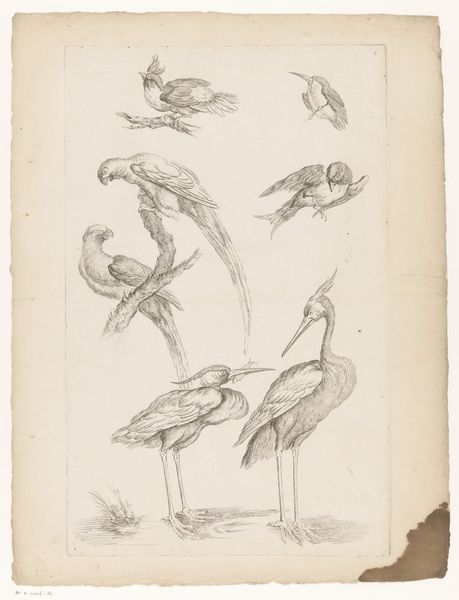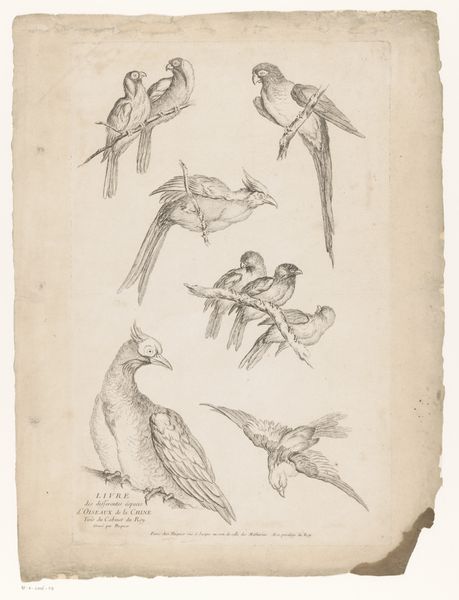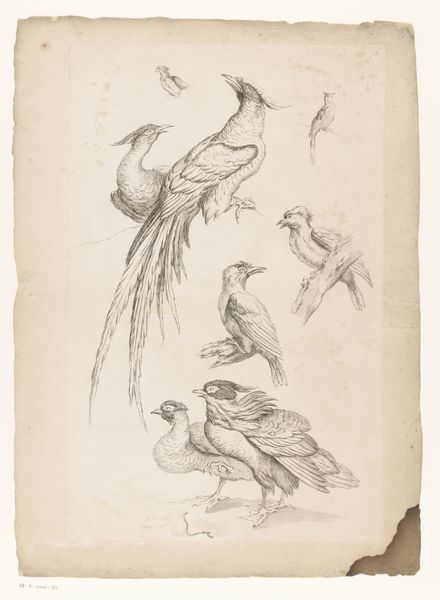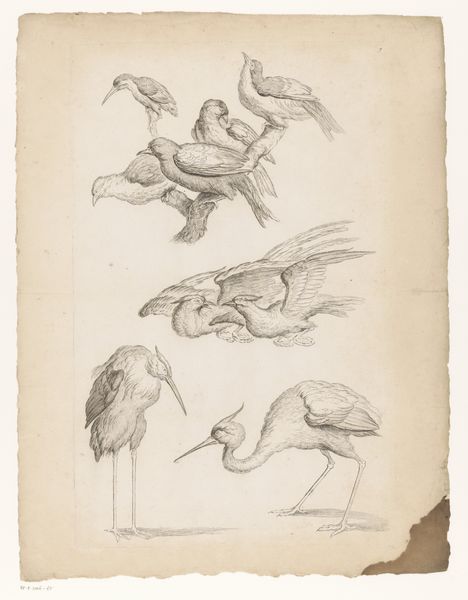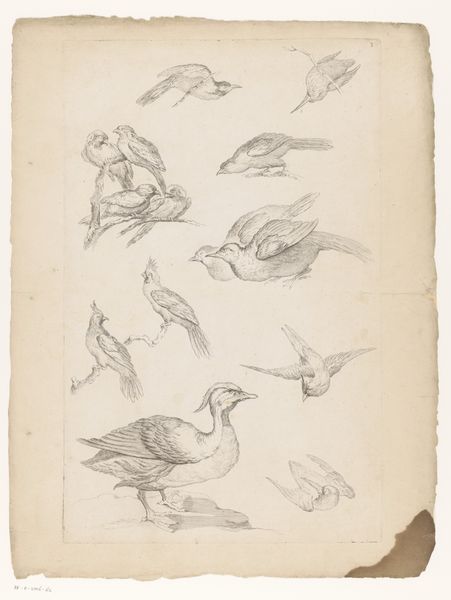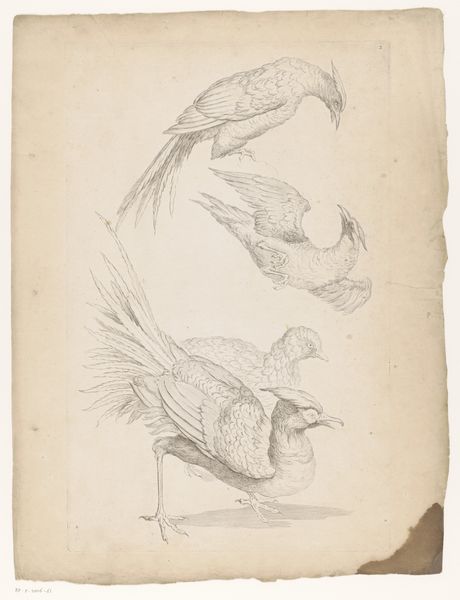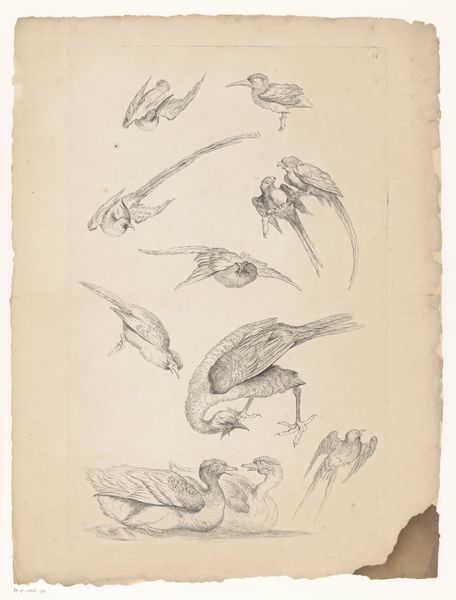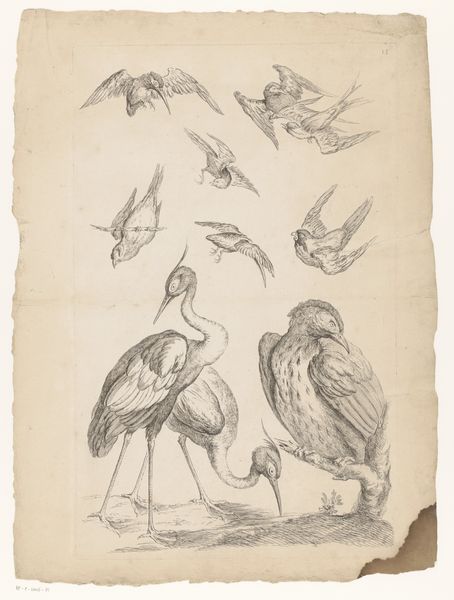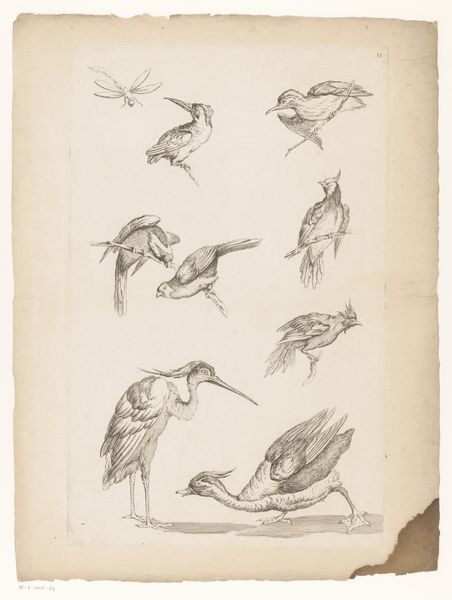
drawing, paper, pencil
#
drawing
#
animal
#
pencil sketch
#
paper
#
pencil
Dimensions: height 545 mm, width 347 mm
Copyright: Rijks Museum: Open Domain
Editor: Here we have "Acht Chinese vogels, waaronder mogelijk paradijsvogels," or "Eight Chinese Birds, possibly including Birds of Paradise," a drawing from 1742-1750 by Gabriel Huquier, rendered in pencil on paper. The grouping and slightly ephemeral feel makes me think these are studies, maybe preparatory sketches. What jumps out at you? Curator: Studies, yes, they whisper of capturing fleeting moments, don't they? Like trying to hold birdsong in your hand. It’s interesting that Huquier, though French, was clearly captivated by the exoticism that Chinese imagery held for Europeans at the time. Each bird, rendered with such delicate pencil strokes, seems to hold a universe of curiosity. Look at the textures, the suggestion of plumage. Doesn’t it almost feel like you could ruffle their feathers? Does this work make you reflect on anything? Editor: I was thinking about how the "Orient" was viewed in Europe during this time, like this idealized fantasy world, which makes the scientific approach of these sketches a bit odd. Curator: Exactly! The Enlightenment was dawning, influencing art, yet old perceptions lingered, creating this tension, a longing for the 'mysterious East'. Perhaps Huquier, through these detailed drawings, was trying to bridge the gap, to understand, and share some piece of the wonder. The sketches almost become a form of scientific poetry, don't you think? Editor: Scientific poetry, I like that! It reframes how I see the piece, giving it a little bit of life. Curator: Wonderful. Art, when it works, opens pathways of thought to let us perceive new possibilities.
Comments
No comments
Be the first to comment and join the conversation on the ultimate creative platform.
